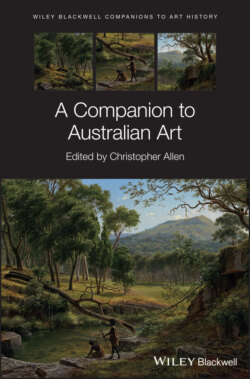Читать книгу A Companion to Australian Art - Группа авторов - Страница 32
The Felton Bequest and the NGV
ОглавлениеThe Felton Bequest,13 established in 1904 under the will of the prominent businessman Alfred Felton, transformed Australia’s museological landscape. At last, an Australian fine art collecting institution had acquired an income which allowed it to compete with the world. It is clear that the establishment of the Elder Bequest for the Art Gallery of South Australia (AGSA) in 1897 served as a model, but Felton provided an endowment 16 times larger, though the will provided for half of the income to be dedicated to good causes concerning women and children, which continues today.
The NGV could now expand its collecting remit, which it did rapidly. Its policies and activities were closer, in many ways, to the US experience of large art museums with multiple departments. The NGV’s collections remit now extended from antiquities to old to modern masters, to collections of Asian material (though still representing an established “European” orientalist taste and connoisseurship), and of course historical and modern Australian art.
The structure envisioned by the will was complex, providing for an independent Felton Bequests Committee, which made funds available, but only after agreement with proposals made by the Director and also approved in principle by the NGV’s Council of Trustees. To ensure efficiency and access to expertise, a London-based advisor was appointed to provide advice on what was available, and to serve as the Bequest’s agent.14
In the field of old masters, works of incomparable quality and art historical importance began to be acquired, ranging from Jan van Eyck’s Virgin and Child (often referred to as the Ince Hall Madonna), to Poussin’s Crossing of the Red Sea, three Rembrandts (one of which is no longer accepted as entirely autograph) at the center of a significant collection of seventeenth century Dutch and Flemish masters, Tiepolo’s sensational 1748 Banquet of Cleopatra, to great British portraits and landscapes (Gainsborough, Reynolds, Wright of Derby, Beechey, Raeburn, Turner and Constable), and substantial collections of works on paper, essentially definitive in the case of Dürer and Rembrandt, and deep in those of Blake and many others.
There were, however, huge battles fought on the matter of collecting modern art, with a fascinating history of debates and disputes between directors and advisors, and the two committees in Melbourne, who did not always agree. It is an intriguing (and often infuriating) story. Inevitably, the buying power of the Felton Bequest has declined substantially from its peak in the early–mid twentieth century due both to steep rises in the value of art, and to the policy of spending the entire income, which in time reduced the acquisitive value of the capital. Conversely, this policy ensured the availability of higher levels of funding to support the purchase of great masterpieces.
Given that both Melbourne-based committees represented in their membership a grouping of sound and sober community leaders, Anglophile to a man, it was never easy for the avant-garde to be given consistent support and priority. If the Impressionist, Post-Impressionist and Modern acquisition proposals made by the early twentieth century London advisors, often (though not always) with the support of the director, had mutually been agreed, the NGV would today have an Impressionist and Modern collection of global significance.15 Instead, it holds a small, though highly distinguished, group of Impressionist and Post-Impressionist works, some excellent early twentieth century avant-garde works (including significant Vienna holdings of Hoffmann and Loos, resulting from the presence in Melbourne of émigré collections), and overall strong representation of the British avant-garde. Throughout the twentieth century, the Felton Bequest purchased modern British works fairly readily, as was the case with the other public art galleries in the state capitals.
While the NGV – because of the Felton Bequest, the on-site presence of its School of Art, and Melbourne’s then financial and political dominance over Sydney (both to change later in the century) – remained pre-eminent among the other Australian public galleries, interesting and consistent patterns developed elsewhere. For the smaller state galleries, more modest funding allocations meant inevitably that it was easier, and more relevant to public expectations, to collect the art of local practitioners, and a notable parallel between public state-funded collecting, and private collecting, existed with many areas of overlap. This continues today and is a relevant factor in relation to Australia’s strong internal art market. As suggested above, the generally Anglophile tastes and interests of the broad population (which still firmly regarded a federated Australia as a part of the British Empire) ensured that most encounters with the European avant-garde began first and foremost through less confronting British art, and the smaller state galleries remain to this day surprising repositories of exceptional masterpieces. Major works by Henry Moore are distributed throughout the country, as is the case with Stanley Spencer (some 30 paintings in Australian public collections), with AGWA having a particularly strong holding. All the major British moderns are represented: Orpen, Peploe, John (Augustus and Gwen), Nicholson (William, Winifred and Ben), Nash, Hillier, Tunnard, Epstein, Hepworth, Bacon, Philpot, Freud and many others.16
